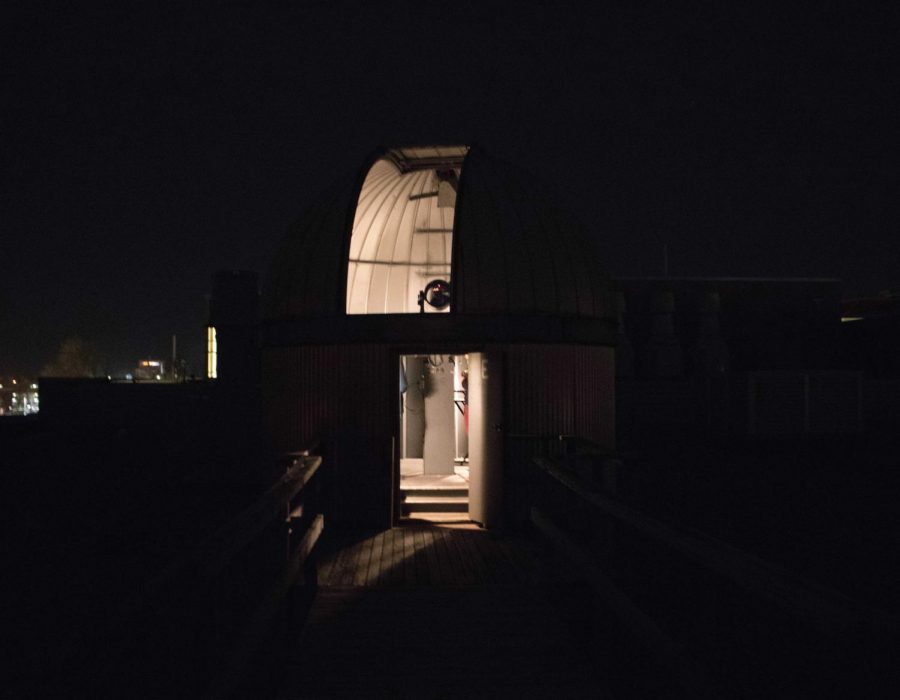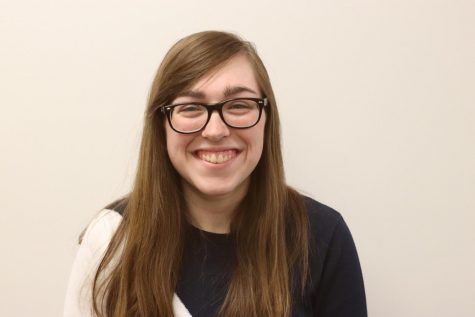Observatory show reaches for the stars
Nov 5, 2018
Rain or shine, every Thursday evening at 9 p.m., the observatory dome atop McCollum Science Hall opens for its weekly show.
Siobahn Morgan, head of the earth and environmental sciences department, facilitates the observatory show each week. During the fall semester, shows begin around the first week of September.
The shows attracts UNI students, high schoolers, Hawkeye students and community members. Morgan noted the show was free.
“Don’t necessarily correlate that with the quality of the show,” Morgan said. “The quality of the show is amazing – it’s priceless.”
The observatory show dates back to around the 1980s, according to Morgan. M.B. Smith, who pursued astronomy as a hobby, donated the first telescope. Twenty years ago, it was replaced with the currently used Meade telescope.
“It’s a combination of optical properties,” Morgan said, describing the telescope. “Most people think it’s a reflecting telescope because it has a large mirror in the back, but technically it’s a refracting and reflecting put together.”
In order to prepare for the show, Morgan and Logan Winford, a physics and earth science major doing research with Morgan, are always the first on the roof.
Red Christmas lights illuminated a wooden walkway leading to the dome. Fans hummed loudly on the roof as Morgan and Winford worked together in the dark, their voices bouncing around the dome. A slat in the dome slid open like a garage door to reveal the cloudy night sky.
The Meade telescope is computer-controlled.
“Its internal sensors know the angle and direction it’s pointing at and then correlate that with how the sky would move over the course of the evening,” Morgan said. “Once it knows where it’s looking, it will then be able to find anything else in the sky over the course of the evening.”
The telescope’s computer keeps track of where each planet is and where the stars are located.
“[The telescope is] pretty good. I like not having to think,” Morgan laughed. “After you find the first star, you can just tell it what to do. You can just say, ‘Go to Mars, go to the moon, go to this, go to that.’”
A group of around 15 people turned up for the show on Nov 1. Despite the overcast sky, Winford spent the first part of the show orienting the crowd to the constellations that could be seen in the sky had it been a clear evening.
Afterward, students crowded into the dome. Instead of gazing at stars or planets, Morgan had students peer through the lens at several signs along University Avenue before explaining how the telescope worked and discussing the image that appeared through the lens, which had become flipped and reversed.
Observatory shows continue through the week before Thanksgiving break and will resume after spring break.









